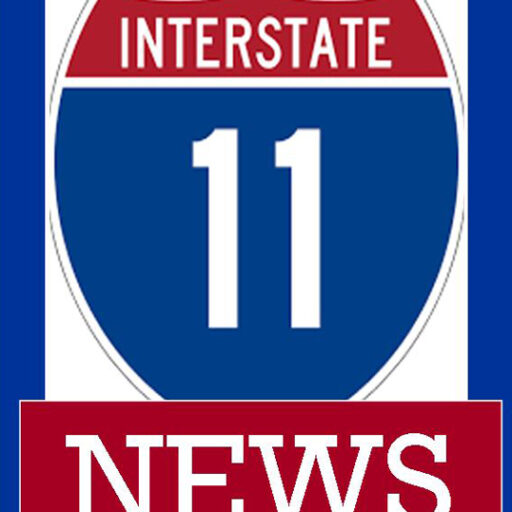Completion of the first-phase environmental impact statement for Interstate 11 from the Mexican border to Wickenburg is a milestone, say those who have long advocated for the new north-south highway.
Or, at least it will be a milestone when it gets final approval.
The Final Tier I Environmental Impact Statement was released in July, and it was expected to receive its “Record of Decision,” the final approval, within 30 to 60 days. But, because of the number of comments received, state and federal transportation officials now say they hope to have the final decision released by the holidays.
Scott Higginson is waiting. He’s patient but not idle.
Higginson is executive director of the I-11 Coalition, a group of business, civic and political leaders from Arizona and Nevada who have been pushing the highway project for more than a decade.
The coalition is “route agnostic,” Higginson said. They did not enter the fray, as a group, during discussions over route options that lead to the final corridor proposed in the Tier I EIS.
“We were just interested in getting it built,” he said.
“I-11 will serve as a great economic benefit to the state, providing commerce connectivity from Mexico to Tucson, Tucson to Phoenix, Phoenix to Las Vegas and, eventually, moving north from Nevada into Oregon and Washington,” Higginson said. In addition to commerce connectivity, the new interstate, as the coalition envisions it, will save drive time, connect the last two U.S. metropolitan areas that do not have an interstate link and alleviate existing trucking bottlenecks through downtown Phoenix.
While awaiting the final decision, Higginson and coalition board members have begun the lobbying process to try to secure funding to pay for the Tier 2 Environmental Impact Statement, just like they did to help pay for the Tier I work. This part of the project will narrow the 2,000-foot-wide corridor into a specific 400-foot-wide route for the highway, pick spots for interchanges and identify mitigation of I-11 impacts.
The coalition is talking to Congress, federal transportation officials, state highway officials, county officials in Maricopa, Pinal and Pima counties, and regional governments as potential sources of money.
Because the Tier 2 study can be done “one bite at a time,” as Higginson explained, the process can get started with a smaller initial investment. The Arizona Department of Transportation – which has been designated as the lead agency for the project – could focus on individual segments rather than the entire route. For instance, it could work on the Wickenburg-to-I-10 segment independently of the others.
Because it can be segmented, there is no dollar estimate on the Tier 2 EIS phase.
Categories: Arizona

